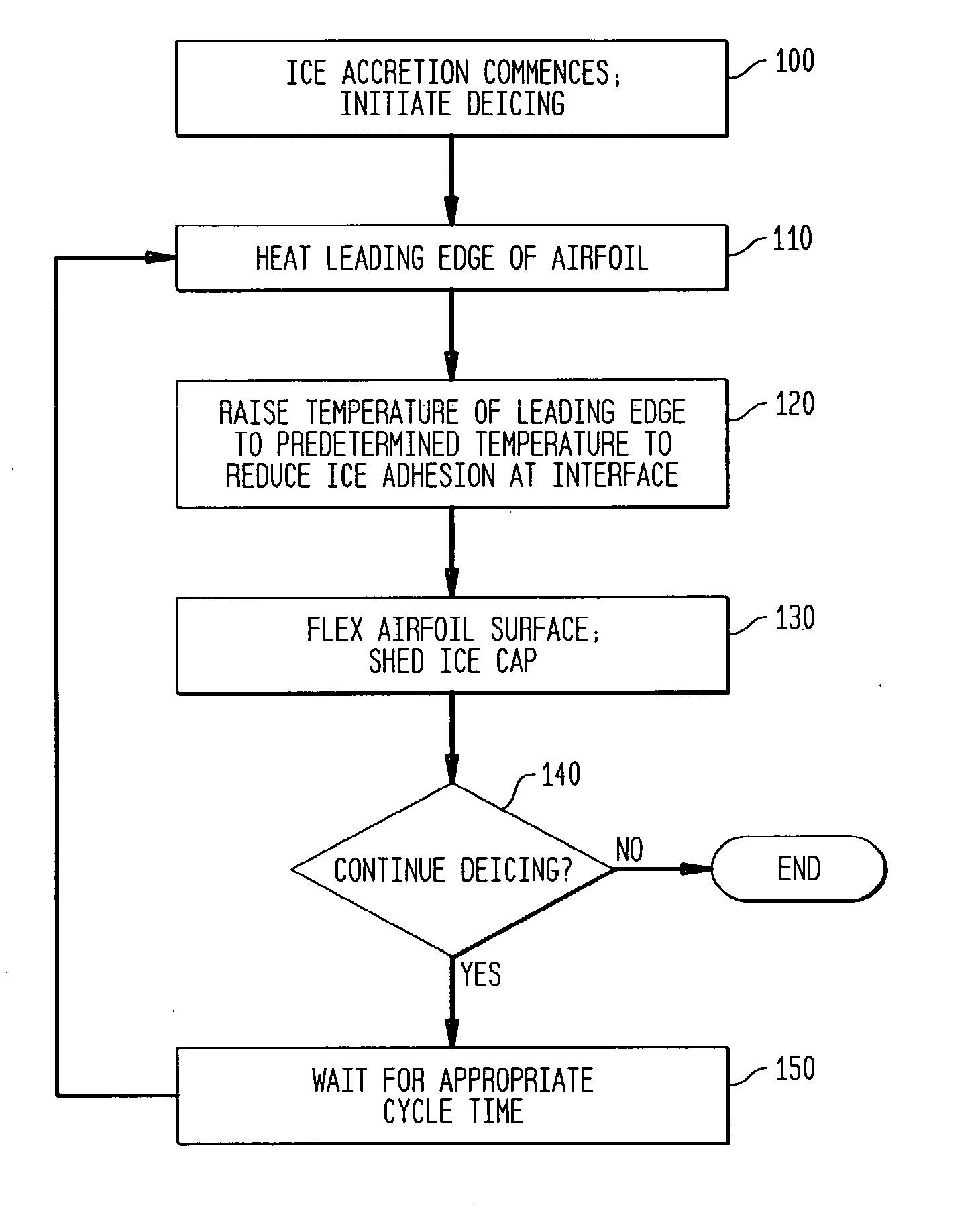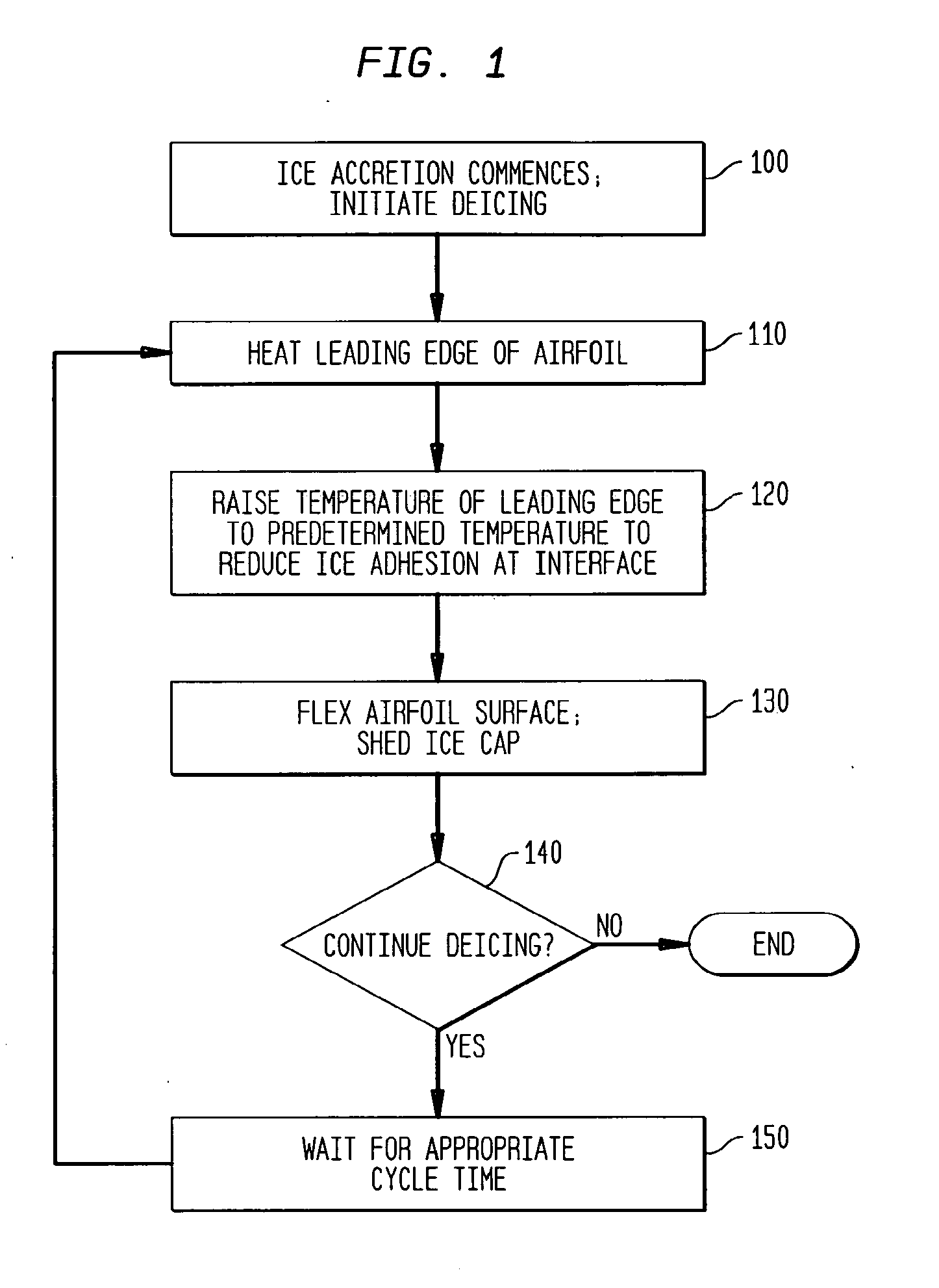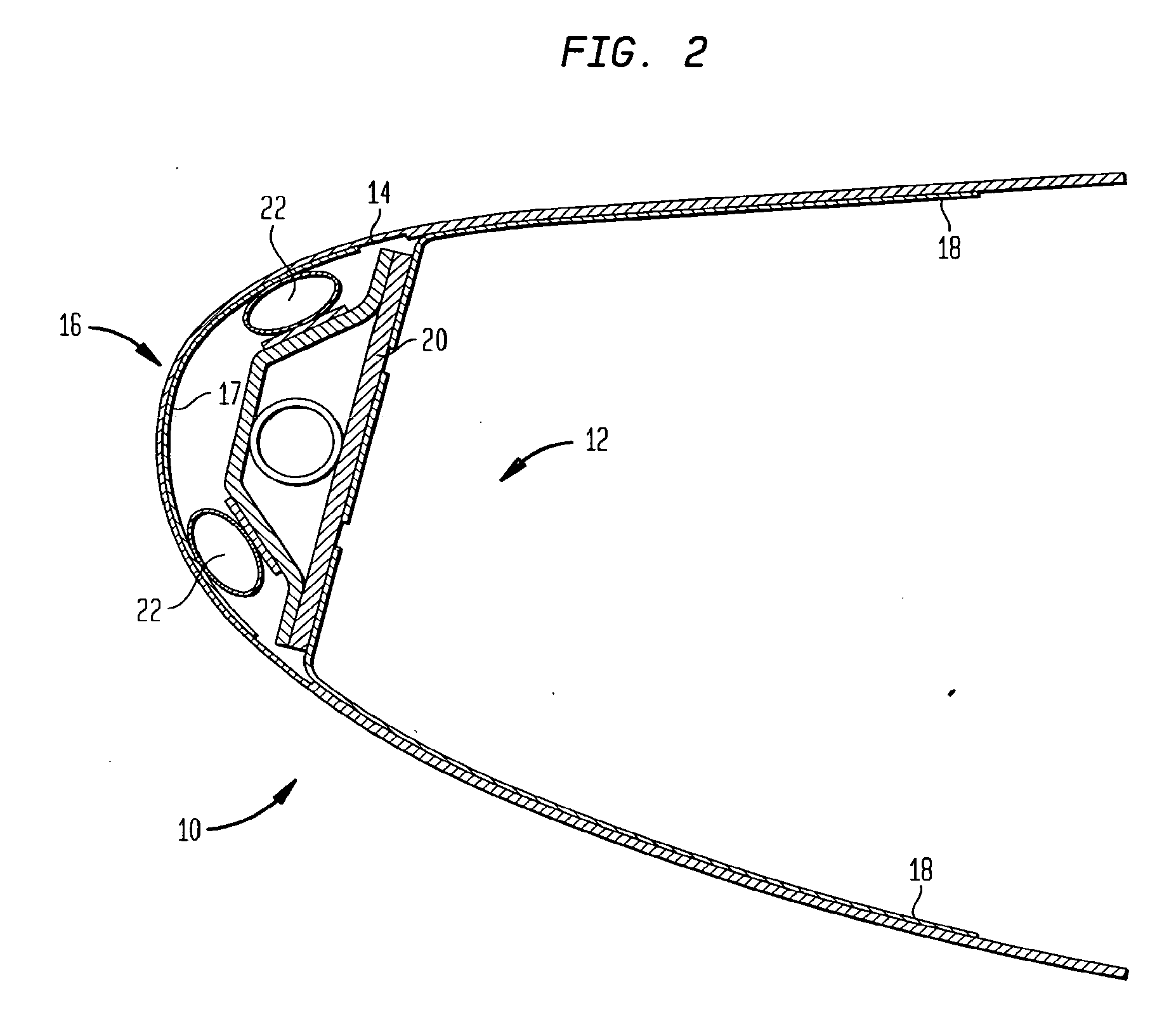Energy-efficient electro-thermal and electro-mechanical ice-protection method
a technology of electro-thermal and electro-mechanical ice protection, applied in the field of ice protection, can solve the problems of increasing drag, reducing lift, and always disadvantageous ice contamination of lifting surfaces (e.g. wings and horizontal tails)
- Summary
- Abstract
- Description
- Claims
- Application Information
AI Technical Summary
Benefits of technology
Problems solved by technology
Method used
Image
Examples
Embodiment Construction
[0018]The same element is always indicated by the same reference numeral in all views. The drawings are not necessarily to scale, and parts may be enlarged for clarity.
[0019]In the following description, the ice-protected component is specifically illustrated to be an aircraft wing. This is because the present invention was designed for this application. However, the invention is not limited to use on aircraft wings and can be used on other surfaces such as horizontal stabilizers, vertical fins, aircraft inlets, and other airfoils.
[0020]The following description also assumes that icing wind tunnel tests have been or will be carried out on a model that simulates, under designed-for conditions of flight, the accretion of ice on the component to be protected. Such tests are routinely conducted during the design of an aeronautical ice-protection system, because empirical data is necessary to verify that the system performs as required within the entire performance envelope of the aircra...
PUM
 Login to View More
Login to View More Abstract
Description
Claims
Application Information
 Login to View More
Login to View More - R&D
- Intellectual Property
- Life Sciences
- Materials
- Tech Scout
- Unparalleled Data Quality
- Higher Quality Content
- 60% Fewer Hallucinations
Browse by: Latest US Patents, China's latest patents, Technical Efficacy Thesaurus, Application Domain, Technology Topic, Popular Technical Reports.
© 2025 PatSnap. All rights reserved.Legal|Privacy policy|Modern Slavery Act Transparency Statement|Sitemap|About US| Contact US: help@patsnap.com



